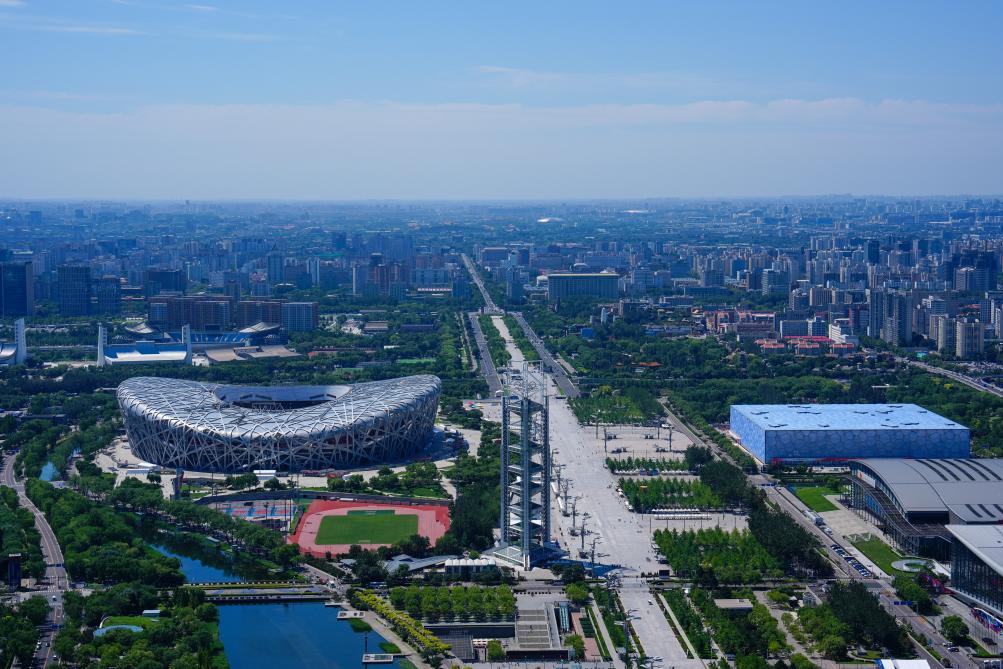
 0 Comment(s)
0 Comment(s) Print
Print E-mail Xinhua, January 6, 2025
E-mail Xinhua, January 6, 2025
Beijing will accelerate work to protect and utilize cultural relics in its core functional areas, and promote public access to more heritage sites along the Beijing Central Axis, which was recognized as a UNESCO World Heritage Site in 2024.
According to the site's office for cultural heritage application and protection, Beijing will take advantage of its unique world heritage resources to enhance its role as an international exchange center, developing the central axis into a space for international events and diplomatic activities under the guidance of the Convention Concerning the Protection of the World Cultural and Natural Heritage.

This photo taken on July 17, 2024 shows architectures along the Beijing Central Axis, with the Bird's Nest as well as the Water Cube on the extension of the axis, seen from the Olympic Tower in Beijing, capital of China. (Xinhua/Ju Huanzong)
Authorities plan to intensify efforts to preserve and display the history and culture of the Beijing Central Axis, including efforts to promote relevant literary and artistic creation, launch more tailored tourist routes, and enhance urban renewal projects in surrounding areas.
Beijing has a history of over 3,000 years and has served as the Chinese capital for 870 years, making it a treasure trove of cultural heritage.
Stretching 7.8 kilometers from Yongding Gate in the south to the Drum and Bell Towers in the north, the Beijing Central Axis was constructed based on ancient architectural philosophies to create an ideal layout for a capital city. The Central Axis can be traced back to the Yuan Dynasty (1271-1368) in the 13th century, while its length was extended in the Ming and Qing dynasties (1368-1911). UNESCO listed it as a World Heritage Site in July 2024.
Following its inclusion on the world heritage list, visits to scenic areas along the central axis have surged significantly. A report from Tongcheng Travel showed that cultural and historical sites remain the cornerstone of Beijing's cultural tourism consumption, with the Beijing Central Axis emerging as a must-visit destination for both domestic and international tourists.
The Altar of the God of Agriculture's Qingcheng Palace complex and the Zhengyangmen Archery Tower, both of which were built in the Ming Dynasty (1368-1644), have recently opened to the public.